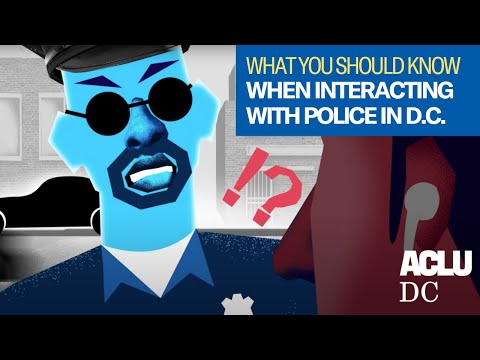Between 2022 and 2023, Metropolitan Police Department officers stopped about one person every ten minutes in D.C. Seventy percent of those people were Black, even though Black people make up 44 percent of the D.C. population. White people made up under 13 percent of police stops, despite comprising nearly 40 percent of the District’s population. What’s more, only about 1 percent of stops between 2022 and 2023 resulted in the seizure of a gun.
A recent report conducted by the ACLU and ACLU-D.C. revealed these troubling numbers. Deep racial disparities and low gun-recovery rates have been a consistent pattern we at the ACLU-D.C. have seen in D.C. police data, including in numbers from 2019 and 2020.
These numbers become even more troubling when they are combined with the results of a 2023 cultural assessment of the D.C. Metropolitan Police Department. Among other concerning practices, the report found that focus group participants from majority-Black Wards 7 and 8 noted experiencing an aggressive and disrespectful style of over-policing that was not seen in other wards. As part of this assessment, District residents were asked to score their level of trust in the police, on a scale of 0 to 10. The highest average score of 7.3 was in a majority-white (82 percent) area of D.C., and the lowest average score of 4.8 was reported in a majority-Black (93 percent) area of D.C.
And we know that experiencing a police encounter can be traumatic and life changing. Research has shown that frequent interaction with police harms people’s economic and social wellbeing as well as their physical and mental health. In young people, the stress of police encounters can show up as an inability to self-regulate and as symptoms of post-traumatic stress, like rapid heart rates, sweaty palms, uncontrollable thoughts, and decrease in quality sleep. All these issues can impact young people’s engagement and performance in school and how they show up in other aspects of their lives.
We also know that people who experience frequent police encounters may end up distrusting the police. Groups of people and communities who are more frequently subjected to police encounters are less likely to report a crime even if they themselves are the victim. D.C. Council Chairman Phil Mendelson noted that people not coming forward was a major barrier to solving homicides in the District.
Despite all these problems, D.C. police continue to stop and frisk people in D.C., and Black people disproportionally bear the brunt of this troubling tactic. Given how often D.C. police rely on this practice, here are some answers to questions you may have about stop-and-frisk in D.C.

